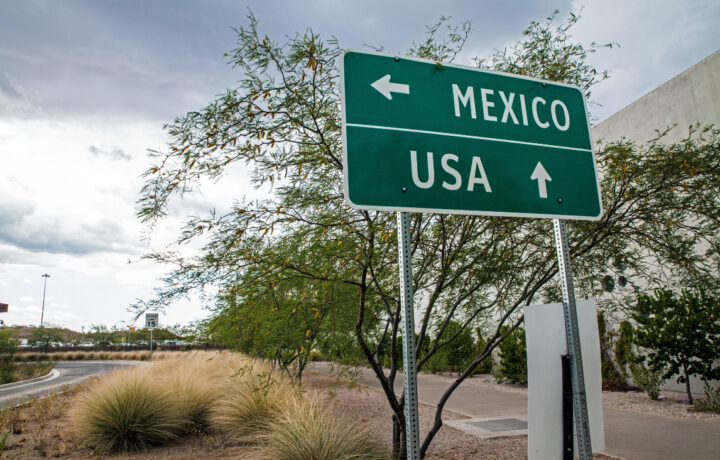A stretch of federal land in Texas will be transferred to the United States Air Force as part of the ongoing efforts to secure the southern border. The land, located along the Rio Grande River in Cameron and Hidalgo Counties, will be the largest “militarized border zone” yet established.
Secretary of Defense Pete Hegseth directed the move last month, with the land becoming part of Joint Base San Antonio, despite the Air Force’s military installation being more than three hours from the counties in question.
“Joint Task Force-Southern Border (JTF-SB) service members, under the direction of USNORTHCOM, will operate within the NDA. Their responsibilities include enhanced detection and monitoring through stationary positions and mobile patrols, temporarily detaining trespassers until they are transferred to the appropriate law enforcement authorities, and supporting the installation of temporary barriers and signage to secure the area,” the Air Force announced last month.
This zone sits on land that has been transferred from the International Boundary and Water Commission. It will be manned by JTF-SB personnel, who will monitor the area, install the necessary barriers and signage, and conduct patrols.
The Border NDAs
This most recent National Defense Area (NDA) is larger than the combined area of the two previous areas. The first NDA was established in New Mexico in April, while another was created in West Texas in May.
The initial NDA includes approximately 170 miles of noncontiguous land near the border with Mexico, serving as an extension of Fort Huachuca. It has expanded the Pentagon’s support to U.S. Customs and Border Protection (CBP) in the region. The second such border zone encompasses roughly 63 miles of noncontiguous land between El Paso and Fort Hancock, serving as an extension of Fort Bliss.
An additional 100-mile NDA is reportedly to be set up in Arizona, but it is unclear when this will occur or how large it will be.
Trespassers will be detained temporarily and then transferred to law enforcement authorities as necessary. However, those caught trespassing could face prosecution for two federal offenses, including illegally entering the country and then trespassing on U.S. military property.
Questions of Military Involvement
Critics of the administration’s border policy have expressed further concerns over the expansion of the military zones, including whether this is the right approach to addressing the border crisis.
“We have an issue that we haven’t been able to resolve with immigration, and I think that this is kind of a drastic way of addressing it,” Hidalgo County Judge Richard Cortez told BorderReport.com.
Others warn that it could set a precedent allowing non-federal land to be militarized.
“The government is saying they see this militarized approach to border enforcement as preempting, or being more important than, other possible uses of this federal land,” Jennifer Kavanagh, the director of military analysis at the Defense Priorities think tank in Washington, D.C., told Military.com.
“I’m not ruling out the possibility that this is something that they try to expand not just by militarizing federal lands to support their border agenda but by trying to take control of territory that currently isn’t federalized and doing the same thing,” Kavanagh added.
High Tech Tools of the Trade
According to a report from the Military Times, a “wide array of technology” is now being employed by the military to monitor the southern border. That has included the deployment of 3D-printed drones, which are seen as more cost-effective than the surveillance flights carried out by military aircraft, such as the famed Lockheed U-2 Dragon Lady spy plane, which was carrying out missions along the border earlier this spring.
Soldiers on the ground are also using ground-based radar to detect “suspicious movement,” notably in remote areas. The information is then passed on to law enforcement. U.S. Army Strykers have been fielded along the border, where the eight-wheeled armored vehicles have been outfitted with advanced camera systems to detect illegal activity.
The military is also monitoring the sharp spike in unmanned aerial vehicles (UAVs) that are believed to be employed by narcotics traffickers, including Mexico’s notorious drug cartels. The Pentagon hasn’t carried out any known operations to shoot down the drones, but the situation continues to be watched closely.




